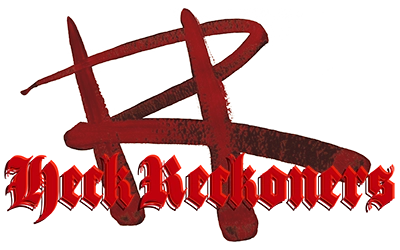“How the fuck do you learn this shit?” That’s me, trying to wrap my head around John Zorn’s 1990 masterpiece of jazz, no wave, film soundtrack, and grindcore, Naked City. One moment the six-piece is ripping through the “Batman Theme”, the next they’re bebopping through the French Quarter, the next they’re screeching through a blast beat that would make Napalm Death proud, a minute later they’re doing country. The Naked City band race through tempo and key changes, turning on a dime, jumping genres faster and more abruptly than a radio changing stations. How do you learn this shit? Well, first, be the best in the world. The downtown NYC jazz scene prioritizes chops. It’s the Mecca for the best players in the world. Second, and perhaps most importantly, you’ve got to devote yourself to it. Creating such complex and abrupt music requires a level of dedication that your typical I-IV-V blues lawyer could never. With Naked City, Zorn wished to create a “compositional workshop” to test the limits of a rock and roll band. Mission accomplished. There’s only one way you get a band to do that: everyone has to buy in.
In 1968, the members of Captain Beefheart and his Magic Band lived together in a house in Los Angeles, where they painstakingly composed and arranged the material for Trout Mask Replica. Beefheart, real name Don Van Vliet, did not play an instrument and could not read music, but he was an all-American eccentric with a bluesy four and half octave voice, and a truly original mind. The rest of the band bought in, especially drummer John French, who transcribed Beefheart’s piano doodles one phrase at a time, until they had a double album of avant-garde blues, free jazz, and polyrhythmic garage rock. When they finally entered Whitney Studios in Glendale, California, the band was able to knock out the recording in six hours. But it took EIGHT MONTHS of intense rehearsals to get to that point. You gotta listen to Trout Mask Replica to appreciate how weird it is. There are no albums that sound like it. Even Beefheart’s later work, which could best be described as mutant blues, only sounds glancingly like Trout Mask Replica, probably because the work it took to make skilled musicians play that bizarrely together is really a once in a lifetime type thing.
The Dillinger Escape Plan’s guitarist Ben Weinman told The Independent in 2017 on the eve on a hiatus that has just ended, “Calculating Infinity was us effectively ripping up the music theory book; if someone said ‘don’t harmonize with a second, it just sounds out of tune’, then every single lead we did, we’d harmonize with a second. It sounded disgusting, but we did it.” Calculating Infinity didn’t come out of thin air – no music does; even Trout Mask Replica had the backing of Frank Zappa’s adventurous label and the precedent of 1960s free jazz to ground it to…something. Bands like Botch, Cave In, and At The Drive-In were smashing math rock into punk and metal like the Large Hadron Collider, but 1999’s Calculating Infinity upped the game. It’s screamy, spazzy hardcore songs were as likely to end suddenly as they were to slide into a jazzy bridge or wall of feedback. If TDEP has as a typical way to begin a song, it’s to start at a pinnacle of chaos that most bands can only build to: a blast beat, a weird guitar scale, a dissonant chord, an impossible to discern time signature, screamed incomprehensible lyrics. Key? Where we’re going we don’t need a key. And then somehow the songs morph into something comprehensible before the band rips them up again. All of this is played with the precision of a jeweler’s laser, which must’ve been a motherfucker to record, because Calculating Infinity was taped. During the recording, the band actually surrendered the publishing rights for the songs to their label Relapse Records for more money for quality control. This is the move of a band with a mission to capture their insane vision as fully as possible. Everyone bought in.

